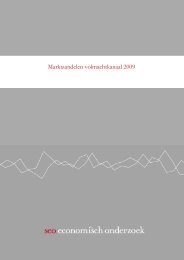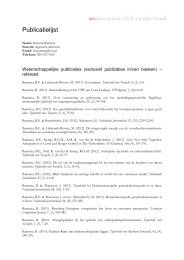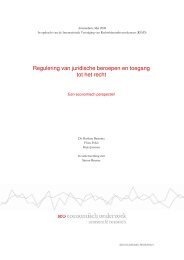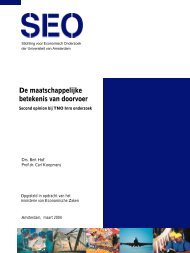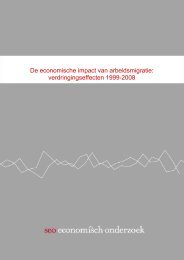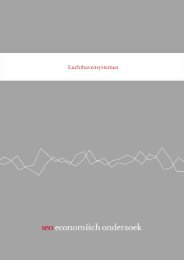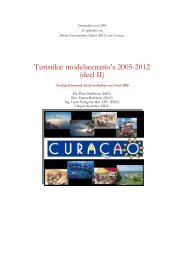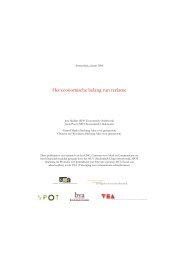Amsterdam, Netherlands - SEO Economisch Onderzoek
Amsterdam, Netherlands - SEO Economisch Onderzoek
Amsterdam, Netherlands - SEO Economisch Onderzoek
Create successful ePaper yourself
Turn your PDF publications into a flip-book with our unique Google optimized e-Paper software.
initiatives like the <strong>Amsterdam</strong> BioMed cluster and the Duisenberg School of Finance indicate thatthe HEIs are working to achieve a turnaround. But more is needed to boost innovative capacity asa general quality of the region.The reverse side of this coin is that the business community in the <strong>Amsterdam</strong> area needs tooperate more proactive when it comes to finding the right knowledge partner for innovation. The<strong>Amsterdam</strong> HEIs have much to offer in terms of knowledge and skills and the local businesscommunity needs to be much more aware of the added value of collaboration. There are newinstitutions in place such as Kennispoort <strong>Amsterdam</strong> which forms an interface between theknowledge institutions and the corporate sector. This may improve the access for firms to theknowledge base at HEIs. But such initiatives will fail to have impact when businesses do not infirst instance feel the urge and necessity to innovate their production processes and product linesand seek assistance from the HEIs to do so. It is here that the corporate sector in the <strong>Amsterdam</strong>metropolitan area can make more progress than is currently the case.A related objective is to increase the importation of R&D-investment which is clearlyunderdeveloped in the <strong>Amsterdam</strong> region. Apparently potential foreign investors are unaware ofthe comparative strength of the knowledge base in the <strong>Amsterdam</strong> region. The internationalreputation of <strong>Amsterdam</strong> is insufficiently associated with excellence and diversity in knowledge.Better information and targeted city marketing could help to remedy this.The third challenge is to establish effective regional learning systems as a means to counternegative social effects from a divided labor market, favoring the opportunities for the highereducated but with bleak prospects for the lower end of the labor market. The HEIs are alreadytaking steps to build more effective regional learning systems, but the coalition supporting suchsystems should be broadened and must for example include the business community,intermediary organizations in the labor market and social security organizations. As a side effect,this may help promote the cause of life-long learning which also benefits from more effectiveregional learning systems.The fourth challenge is to adopt an integrated approach to the labor market. We have seen inchapter 4 that urban sprawl reduces the growth of labor supply and in its track that ofemployment opportunities. The difficult housing market in the city combined with the mountingproblems of commuter traffic may deepen these effects of urban sprawl. This poses a seriousthreat to the competitive position of the economy in the whole metropolitan area in the mid andlong term. It also undermines the contribution of the HEIs to regional development due to the riskof a human capital flight. Such risks require close monitoring. How do the demand and supply ofhigher education develop in the region? What is the labor market position of higher educationgraduates? These are developments which the HEIs should monitor more closely in order tosafeguard their positions. The HEIs should be aware of the options open to them to improve theirquality as national and international talent magnets. In addition, coalition formation is called forto effectively tackle the bottlenecks which hinder the development of the regional knowledgebasedeconomy.7.4 Conclusion: the road forward7.4.1 The need for increased investmentThe lessons of the self-evaluation report point to a common agenda with several options. Themain task facing the stakeholders in the <strong>Amsterdam</strong> metropolitan area is to increase the level ofinvestment in knowledge. This is the principal weak point which emerged in the SWOT-analysesmade for this report. The <strong>Amsterdam</strong> region underperforms if we look to private investment inR&D. The level of public investment in R&D is on the average national level, which isunderstandable given the extent of the publicly financed higher education and scientific researchsector in the region. The main bottleneck is that this output in research and skills does not attractmore investment from the private sector. It will be the main task of the region in the coming years132



